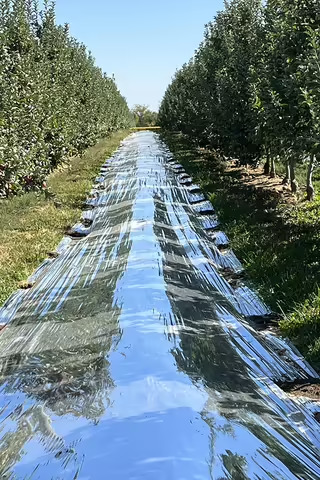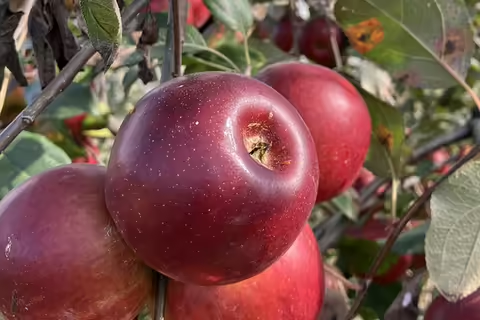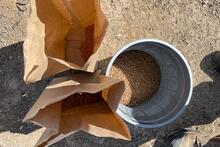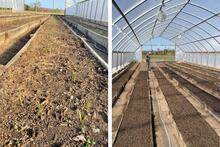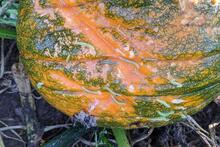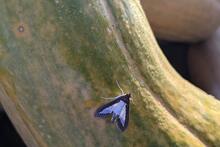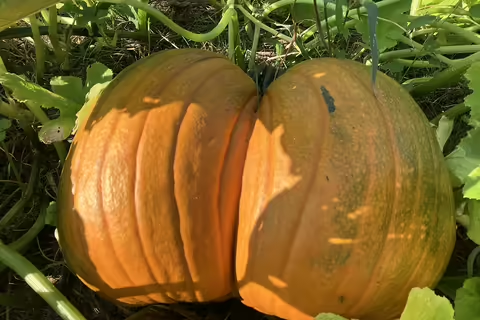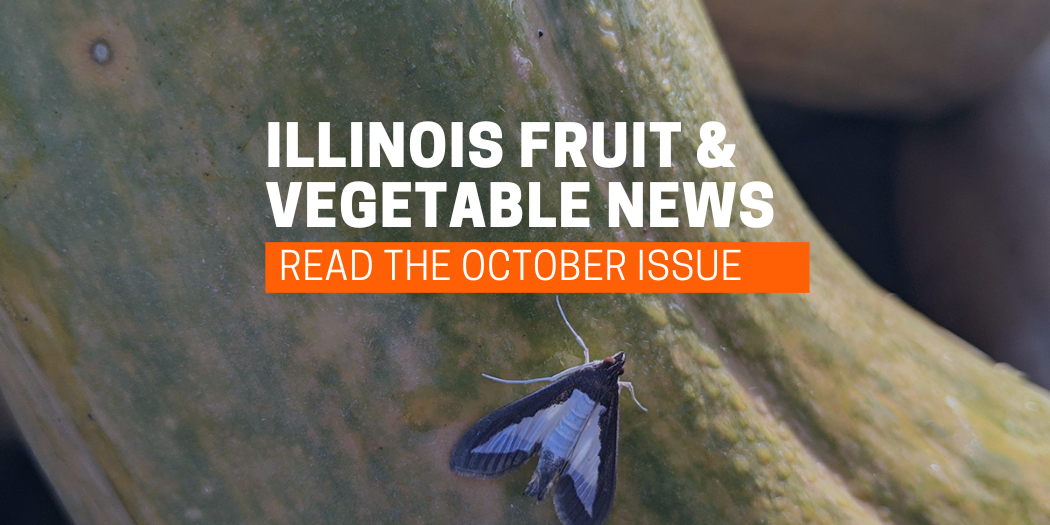
Virtual Illinois Farm to School Network
October 27 | 2 to 4 PM. Repeated December 8 | 2 to 4 PM
RSVP Today
Learn the who, what, why, where, and how to be part of the Farm to School the program as a buyer and a seller. Gain understanding of some of the tools and strategies for buying and selling local food. Hear from success stories around the country and here in Illinois. Finish the session with a listening session designed to uncover barriers to farm to school, what is and isn't currently working, and recommendations for policy, program, logistical, and infrastructure solution to make Farm to School more successful and accessible in Illinois. Your contribution helps build a more resilient food system in Illinois.
Sponsored by: Illinois Farm Bureau, Seven Generations Ahead, and the National Center of Technology to discuss the .
Positioning the Next Generation for Transition of the Family Farm
Friday, December 2 | 9 AM to 4 PM
Register Here
Family farms must select the one or two people in the next generation that can successfully lead and own the farm, but who is that? The Illinois Farm Bureau is offering a free, full-day farm transition seminar at its Annual Meeting to help your family work through these challenges.
Add the day to your Annual Meeting schedule. Dan Bean, CMA Consulting will guide next steps of transition:
- Expert advice, models and a framework for completing this process
- Time to reflect on your own farm by collecting and recording your thoughts at key points
- Opportunities to learn from peers who are in similar situations
St. Louis Metro East Regional Report
The St Louis Metro East has been running dry, but has experienced some of the best weather for agritainment and u-pick operations. The last significant rain any of the region received was September 22, and since then, only 0.28 inches has come this way.
The ground has hardened considerably, making fruit tree removal and renovation a bit more challenging. Temperatures have been gradually dropping since that September 22 rain, and the region experienced its first dip into the upper 20s the week of October 16, which is right on par with the region’s first average frost based on a 30-year average.
Because of the dry conditions, annual strawberry producers irrigated, not only to maintain growth, but to capture the heat of the sun during the day ahead of light frost events in lieu of needing to apply and pull frost covers this early. Temperatures are expected to climb back into the 70s in time for another great pre-Halloween weekend.
Apple harvest is coming to an end with cultivars such as EverCrisp and Granny Smith. The trial looking at calyx-end cracking in EverCrisp will be harvested and evaluated to see if any of the growth regulator treatments had any effect. Reflective mylar film was placed between rows to improve apple color. While this was not part of the treatment, it was in the trial. Look for details at the upcoming winter meetings. Fall greens and pumpkins are still in harvest and both crops are reported as good.
As a reminder to Illinois cider producers, the From Food to Flowers: Everything Local conference (previously the Illinois Specialty Crops Conference) will be hosting the annual Illinois State Cider Contest again this year. If you intend to enter the contest, make sure to reserve some of your product now by freezing.
The 2023 From Food to Flowers: Everything Local will be held at the Crown Plaza Hotel in Springfield January 11 - 13. The cider contest will be held Thursday, January 12, and awards will be presented at the evening banquet that same day. Cider contest details will be coming soon at or you can contact ISHS Cider Contest coordinator, Ken Johnson at 217-243-7424 or kjohnso@illinois.edu.
Photo ID: Reflective mylar film to improve apple color. Photo credit: E. Wahle
Elizabeth Wahle (618-344-4230; wahle@illinois.edu)
Southwestern Illinois at Waterloo Regional Report
Our area continues to be exceptionally dry for this time of year. We have received little, if any, measurable rainfall in the last month. Nearly every day has been sunny and rather windy, as well. Temperatures have been pleasant overall, with most days in the 60s and 70s.This has been an almost perfect weather year for any fall agritourism, as we haven’t had a bad weekend in the last month or two. Last week, we got some of the coldest weather of the season with a killing freeze and temperatures in the upper 20s to 30.
Harvests
- The dry weather was good for pumpkin and apple harvest.
- There were less issues with fruit rots and good conditions for field access.
- Fall planted lettuce, other cool season vegetables, and fall cover crops have been struggling to really take off. Even cover crops planted well over a month ago still are only partially emerged. Rain is forecasted for the last full week of October and hopefully that comes through.
Home on the farm:
I had a very good apple harvest and picked a nice crop of Pixie Crunch and Goldrush. They could have been thinned a little better to increase fruit, but they ended up sizing better than I expected, even the Pixie Crunch which is naturally a smaller apple.
Pumpkin harvest has been very good overall. Our crop has been late because of stalled growth during dry weather in July, but now, everything has matured and looks good. Size has been exceptional for most varieties, I think due to the more mild cooler weather in August when fruit set and sizing were occurring. We had no melonworms, had very good control of powdery mildew, and no other major insect or disease pests that could not be managed. The only issue as of the last two weeks has been mice and voles.
I have had a big push of fruit feeding recently. I think the frost, and dry weather has left them looking even more for food and moisture. We have the majority of what we need already harvested, but the voles are annoying when gleaning a few last things out of the field. They will look good on the top, but there is damage on the bottom of fruit.
Something new this year I had not seen previously what I think is mice or vole feeding on pumpkin stems after harvest in bins. I pulled a few pumpkins from the top of a bin and saw a pumpkin that had the stem chewed on and one the stem was completely chewed off! I think this is a random chance occurrence, but annoying of course.
Let’s hope we can get some rain and some more nice fall weather as we head into November!
Nathan Johanning (618-939-3434; njohann@illinois.edu)
Dixon Springs Ag Center Regional Report
The far southeastern part of Illinois remains extremely dry. The first part of the week of October 18, we saw temperatures drop into the mid to lower 20s. On the night of October 20, Cape Girardeau measured its coldest temperature on record for the month of October at 22 degrees.
On October 3, we seeded two different cover crop species in the 8 rows within one of our in ground, raised bed high tunnels as we begin work on our latest funded grant project.
- We used spring oats at a rate of 30 lbs/acre and crimson clover at a rate of 10lbs/acre.
- When one bed is approximately 160 square feet, very little seed is needed and doesn’t seem like near enough as you are walking down the aisle trying to uniformly “broadcast” tiny clover and oat seeds.
- We also spread approximately 30 lbs/acre of nitrogen in the form of 12-12-12 to offset any nitrogen tie up that might potentially occur from the compost that was added to the beds as a soil amendment.
- We have experienced delays in growth in other plantings in the last season or two and have suspected a bit of nitrogen tie up as the cause.
- The seed and fertilizer were watered in using a hose instead of drip irrigation. We wanted moisture to be uniform across the whole bed surface and also a good soaking to help improve the seed/soil contact.
- The beds have been hand watered daily to maintain moisture and it took about 7 days for seeds to germinate.
The other high tunnel will serve as the control tunnel and no cover crops will be seeded or grown there for the duration of the grant period.
Bronwyn Aly (618-695-2441; baly@illinois.edu)
Update on Melonworms
The 2021 pumpkin growing season ended with many growers having an outbreak of caterpillars on their pumpkins after they had finished spraying insecticides for the year. These caterpillars also proved to be pretty hard to kill once growers started to attempt to control them.
For the 2022 growing season, we wanted to get ahead of the problem and see if we could intercept the moth before we had a problem with the caterpillars. To this end, we sent traps to growers throughout the state and monitored for melonworm activity. This year, it appears we may have been spared from experiencing this particular pest problem. We seem to have been lucky this time around, but we would like to keep monitoring in the coming years.
Melonworms are a sporadic pest and we do not want a repeat of 2021 if we can help it. For those of you that had traps, if you would like to keep trapping next year let me know (kathey@illinois.edu ).
Photos: Courtesy of Monique Liguori Weinberg
Kacie Athey (217-244-9916; kathey@illinois.edu )
Less Seriously: Caption This
Since I should probably not, I’ll let you caption this picture. Feel free to share your caption with us if you feel so inclined.
Photo: N. Johanning
Upcoming Events
- Farm Liability and Insurance Basics | January 23
A series of free webinars from Illinois Extension and Farm Commons designed to minimize legal risk and build resilience for Illinois farmers. Learn more.
- 2023 From Food to Flowers: Everything Local | Illinois Food, Farm Market & Specialty Crops Conference
January 11-13, 2023 | Crowne Plaza, Springfield
Save the date as registration and conference details will be coming soon.
- Southern Illinois Fruit and Vegetable School | February 8, 2023
Mt. Vernon, Illinois, Doubletree Inn
Save the date and look for registration and program details soon
University of Illinois Extension Fruit and Vegetable Specialists
Extension Educators – Local Food Systems and Small Farms
- Bronwyn Aly: Gallatin, Hamilton, Hardin, Pope, Saline, and White Counties | 618-695-2441 | baly@illinois.edu
- Katie Bell: Franklin, Jackson, Perry, Randolph, and Williamson Counties | 618-687-1727 | klbell@illinois.edu
- Sarah Farley: Lake and McHenry Counties | 847-223-8627 | sfarley@illinois.edu
- Nick Frillman: Woodford, Livingston, and McLean Counties | 309-663-8306 | frillma2@illinois.edu
- Zachary Grant: Cook County | 708-679-6889 | zgrant2@illinois.edu
- Doug Gucker: DeWitt, Macon, and Piatt Counties | 217-877-6042 | dgucker@illinois.edu
- Grace Margherio: Jackie Joyner-Kersee Center, St. Clair County | 217-244-3547 | gracem@illinois.edu
- Grant McCarty: Jo Daviess, Stephenson, and Winnebago Counties | 815-235-4125 | gmccarty@illinois.edu
- Kathryn Pereira: Cook County | 773-233-2900 | kpereira@illinois.edu
Extension Educators – Horticulture
- Chris Enroth: Henderson, Knox, McDonough, and Warren Counties | 309-837-3939 | cenroth@illinois.edu
- Andrew Holsinger: Christian, Jersey, Macoupin, and Montgomery Counties | 217-532-3941 | aholsing@illinois.edu
Extension Educators – Commercial Agriculture
- Elizabeth Wahle: Fruit and Vegetable Production | 618-344-4230 | wahle@illinois.edu
- Nathan Johanning: Madison, Monroe, and St. Clair Counties | 618-939-3434 | njohann@illinois.edu
Campus-based Extension Specialists
- Kacie Athey: Entomology | 217-244-9916 | kathey@illinois.edu
- Mohammad Babadoost: Plant Pathology | 217-333-1523 | babadoos@illinois.edu
The Illinois Fruit and Vegetable News is a production of University of Illinois Extension and provides timely, research-based information that commercial fruit & vegetable growers can apply to benefit their farming operations.
Address any questions or comments regarding this newsletter to the individual authors listed after each article or to its editors, Nathan Johanning, 618-939-3434, njohann@illinois.edu or Bronwyn Aly 618-695-2441, baly@illinois.edu.
To receive or be removed from email notification of new postings of this newsletter, contact Nathan Johanning or Bronwyn Aly.
Download this Issue
Download this issue and share with others.
